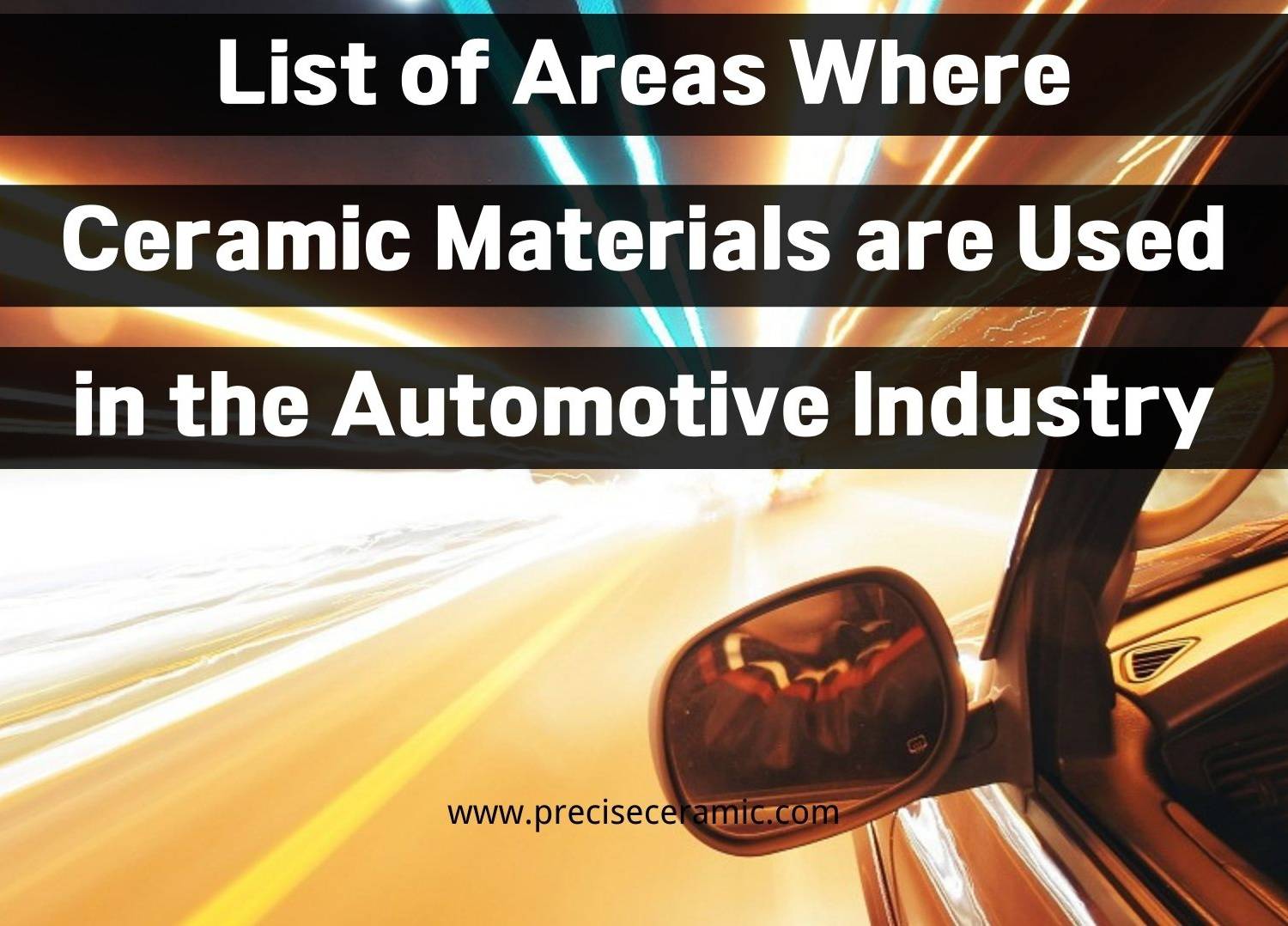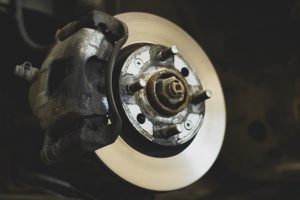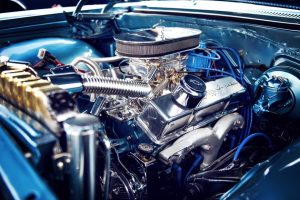List of Areas Where Ceramic Materials are Used in the Automotive Industry

Ceramics are essential products used in a wide range of applications. Advanced ceramic materials (which are manufactured using advanced techniques) are currently being used in telecommunications, transportation, space exploration, defense, manufacturing, and even in the automotive industry. Ceramic materials like zirconia, silicon carbide, alumina, and several others have been used in most of the applications listed above. In this post, we'll be focusing on the applications of ceramic materials in the automotive industry. Indeed, ceramic materials have a number of unique applications in the automotive industry. Here, we highlight and discuss these applications.
Use of Ceramics in the Automotive Industry
The automotive industry encompasses elements of electronic, mechanical, electric, software, and safety engineering as applied in the manufacture of motorcycles, automobiles, aircraft, marine vessels, and any other components of automotive systems. Here are some interesting applications of ceramic materials in the automotive industry:
1. Application of sensitive ceramics in automotive sensors
Ceramic materials are used in developing advanced monitoring systems. For instance, ceramic tire pressure monitoring systems notify the driver and occupants of a car of any sudden loss of tire pressure or if one of the tires does not have enough pressure in it. One important requirement for automotive sensors is that they must be applicable in harsh environments, such as high temperature, low temperature, vibration, humidity, noise, or other circumstances where the vehicle is used for a long time. Ideally, it should also be small and lightweight, reusable, with a wide output range. Again, ceramic sensors are used extensively for heat resistance, corrosion resistance, wear resistance, etc.
2. Heatshield
The heat shield in automobiles is a commonly used heat management option. It is preferred because of its low price and fitment. It has always been made from rigid steel, but now more recently made from flexible aluminum. In recent times, advancement in technology has led to the use of ceramic thermal barrier coatings on flexible aluminum. This makes it possible to increase the thermal insulation properties.
3. Ceramics in automobile brakes
Ceramic materials are applied in making brake components. Carbon fiber brakes, which are composed initially of carbon fiber and resin, are pressed into shape by a machine. This is then converted into a ceramic brake after being subjected to other processes like heating, carbonization, and cooling.

Ceramic brakes are composed of a very hard carbon-silicon compound surface of the ceramic and discs with carbon fiber structure. These features make the ceramic brake strong and extremely wear and corrosion. This technology is currently utilized in F1 racing cars and other strong automobiles.
4. Ceramics are used in automotive shock absorbers
The damping device installed in a luxury car is a smart damping device developed by using the positive piezoelectric effect, inverse piezoelectric effect, and electrostrictive effect of sensitive ceramic materials. Remember that ceramic components have the same sensitivity. The high sensitivity of the ceramic components makes the damping device or shock absorber capable of identifying portions of the road that are undulating and subsequently readjusting to offer the occupant of the car comfort. This helps to minimize the vibration caused by rough road surfaces.
5. Ceramic materials in automobile engines
Advanced ceramics are widely used in aerospace and, more recently, in automobile engines. Engine components are the parts of a car exposed to the highest stress, including several other factors, such as temperature fluctuations, water splashes, and shocks. These are perfect preconditions for materials and systems technology to offer the best performances. They offer excellent insulation against heat and protection against wear. They typically withstand high temperatures and high pressure and are generally stable.

Since ceramic materials are mostly lightweight and have very high resistance to heat, wear and corrosion, they are perfect for this kind of application. They are a reliable source when conventional materials fail. For instance, MMC composites and structural ceramics are used by design engineers today due to their lightweight and fitment for engine production. Ceramic materials are used in engine manufacture to minimize the chances of thermal damage. They are used in making engine combustion chamber components, like cylinder liners, piston top injection, etc. The engine can reduce heat loss and reduce fuel consumption after this treatment.
Conclusion
Ceramics have very vital contributions in the automotive industry. The most commonly used advanced ceramic materials used for such applications include zirconia ceramics and alumina ceramics. They have particularly superior mechanical properties, which is why they can be processed into auto parts. Thank you for reading our article and we hope it can help you to have a better understanding of ceramic materials. For more information about ceramic materials, please visit https://www.preciseceramic.com/.
{{item.content}}
LEVE A REPLY
{{item.children[0].content}}
{{item.content}}
LEAVE A REPLY
SUBSCRIBE OUR NEWSLETTER
- AlN Ceramic Substrates: Enabling Next-Gen Electrostatic Chucks
- The Amor of Semiconductor Tools: Why High-Purity Al2O3 & AlN Are Preferred for Plasma Process Chambers
- Silicon Carbide - Ultra-High Temperature Ceramics for Extreme Environments
- Aluminum Oxide Ceramics: Properties and Applications
- Boron Nitride Coatings: The Solution for Molten Metal Applications










